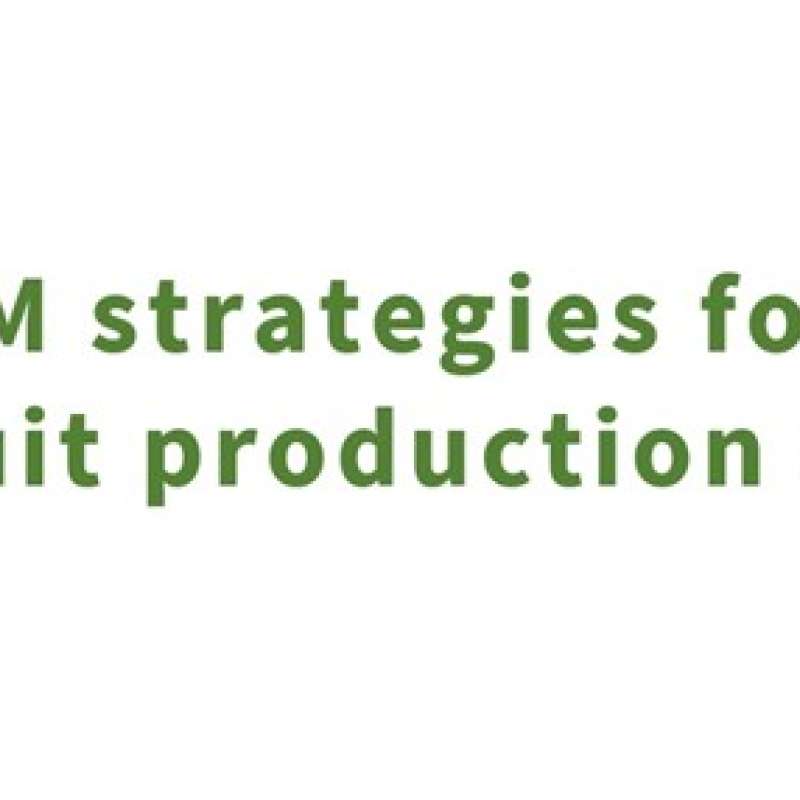Gunnhild Jaastad
Research Scientist
(+47) 959 02 678
gunnhild.jaastad@nibio.no
Place
Ullensvang
Visiting address
NIBIO Ullensvang, NO-5781 Lofthus
Authors
Carey Donald Gunnhild Jaastad Marianne Hauglid Flågeng Sylvain Alain Yves Merel Josef Rasinger Marc HG Berntssen Ikram BelghitAbstract
Insect farming is gaining increasing attention because of the ability of insects to upscale a variety of waste and by-product biomass efficiently into proteins and lipids. In the European Union and in Norway, the use of insects is permitted in formulated pig, poultry, and fish feeds and more recently for human consumption. However, the European Food Safety Authority has highlighted the lack of data regarding the safety of processing pesticide-contaminated biomass by insects into feed or food products. Secondly, the presence of insecticide residues in plant biomass might negatively affect the growth or survival of the insects themselves. This study aimed to evaluate the fate of the insecticide pirimiphos-methyl (PM) in black soldier fly (Hermetia illucens, BSF) and yellow mealworm (Tenebrio molitor, YMW) larvae composting. PM is a dominant pesticide found in relevant insect biomasses. Newly hatched larvae were fed on a standard poultry feed substrate spiked with pirimiphos-methyl at different concentrations: 10, 20, and 40 mg/kg (wet base), under optimal breeding conditions. Poultry feed substrate spiked with methanol served as control group. When the feeding media were spiked with 20 and 40 mg/kg of PM, the survival of both BSF and YMW larvae decreased. Mean larvae mass for both species was reduced with increasing concentrations of PM. PM and 7 compounds were identified in a metabolites/transformation product screen that was aided by in silico predictions. One compound, dihydroxy-PM was uniquely detected in larvae. Neither insect species appears to accumulate PM metabolites, and 90% of PM was metabolised. Results indicate that these insects can be reared on PM-contaminated biomass without risk of PM accumulation.
Authors
Gunnhild JaastadAbstract
No abstract has been registered
Authors
Bjørn Arild Hatteland Rafael De Andrade Moral Gunnhild Jaastad Gaute Myren Endre Bjotveit Irén Lunde Sekse Karin Westrum Nina TrandemAbstract
BACKGROUND Integrated pest management (IPM) has a long history in fruit production and has become even more important with the implementation of the EU directive 2009/128/EC making IPM mandatory. In this study, we surveyed 30 apple orchards in Norway for 3 years (2016–2018) monitoring pest- and beneficial arthropods as well as evaluating fruit damage. We obtained growers’ diaries of pest management and used these data to study positive and negative correlations of pesticides with the different arthropod groups and damage due to pests. RESULTS IPM level had no significant effects on damage of harvested apples by arthropod pests. Furthermore, damage by arthropods was mainly caused by lepidopteran larvae, tortricids being especially important. The number of insecticide applications varied between 0 and 3 per year (mean 0.8), while acaricide applications varied between 0 and 1 per year (mean 0.06). Applications were often based on forecasts of important pest species such as the apple fruit moth (Argyresthia conjugella). Narrow-spectrum insecticides were commonly used against aphids and lepidopteran larvae, although broad-spectrum neonicotinoid (thiacloprid) insecticides were also applied. Anthocorid bugs and phytoseiid mites were the most abundant natural enemies in the studied orchards. However, we found large differences in abundance of various “beneficials” (e.g., lacewings, anthocorids, parasitic wasps) between eastern and western Norway. A low level of IPM negatively affected the abundance of spiders. CONCLUSION Lepidoptera was found to be the most important pest group in apple orchards. Insecticide use was overall low, but number of spray applications and use of broad-spectrum insecticides varied between growers and regions. IPM level did not predict the level of fruit damage by insects nor the abundance of important pests or most beneficial groups in an apple orchard. © 2023 The Authors. Pest Management Science published by John Wiley & Sons Ltd on behalf of Society of Chemical Industry.

